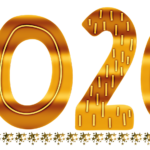CareerOneStop
A portfolio is a collection of work samples that you can bring to an interview, send to a prospective employer, or even post online.
They can:
- Provide evidence of work that you’ve done.
- Illustrate your skills and abilities.
- Show the quality of your work.
A portfolio is a way to organize and present your skills, projects, training and education. It allows you to display your best work. It also can provide a way to tell the story of your career and the challenges you have overcome.
If you are looking into several types of jobs, then you may need more than one portfolio. Read below to learn about the types of portfolios you might want to create for yourself.
Paper portfolios
For a paper portfolio, begin with a loose-leaf binder with divider:
- The first page can be a fresh copy of your resume. Or place that in a pocket in the front cover.
- Include a table of contents. This makes it easier for both you and the prospective employer to find items quickly.
- Display the rest of the content in clear page protectors.
Group your work samples into logical categories. For example, you could organize by the specific skills used, the type of project, or product line.
How you organize your portfolio is up to you, but make sure you label each item.
Explain what each item is, your involvement, and the skills you used. If possible, use color copies or colored paper to add visual appeal. Another option is to include partial samples of your work and offer full versions if the interviewer requests them.

Besides work samples, there are a number of other items you could include in your portfolio:
- Employer/industry information (articles on the interviewer, employer, and industry)
- Skills list, matched to the specific job
- Job match letter
- Workshops and conferences attended
- References, evaluations, letters of recommendation, and testimonials
- Letters of thanks
- Articles about you
- Stories demonstrating skills or character (preferably signed)
During the interview, refer back to the portfolio any time you can. Look for opportunities to show and tell the employer what you have done. Each time, pull out a copy to show the interviewer. Have a photocopy available to leave behind.
Online portfolios
Online portfolios are an easy way for potential employers to view samples of your work. And that might just tip the scales in your favor. Include your portfolio’s web address on all job search communication. If you participate in online networking, add a link to your online portfolio. This will make it easier for your network to recommend your work to others.
Don’t be tempted to quickly throw an online portfolio together. You need to research your technical options. And there are a lot of them out there — from blogs to free or subscription portfolios to building your own website. Free services allow you to get up and running quickly with limited design skills. But they may come with some disadvantages:
- They may restrict how many files you can upload as well as the type AND size of the files.
- They may allow limited customization.
- They may show ads on your blog or portfolio. (This is how some can offer it for free.)
The online portfolio solution you choose will depend on your needs, time, budget, and web skills. Carefully compare features to determine which one meets your needs.
- Blog portfolios can be an excellent starting point, especially if used only for that purpose. They tend to be easy to set up and use. Most allow you to organize content easily. You can also embed almost anything. Blogs are often free, but many have subscription options with advanced features. This may be a good option if you need a simple portfolio.
- Free or subscription-based portfolios tend to allow a wider range of file types, and larger files. These files are uploaded directly to the host site. Portfolio options are geared toward presenting graphic elements rather than text. These are ideal if you need to showcase work visually.
- Custom portfolios give you the most control over how your work is presented. They also require the most hands-on labor since you must design the site yourself. Free templates and tools can simplify the process. You will also need to register a domain name and host the site somewhere.
Learn about work samples you might want to include.
This article previously posted at CareerOneStop. Visit https://www.careeronestop.org/JobSearch/Resumes/Portfolios.aspx











